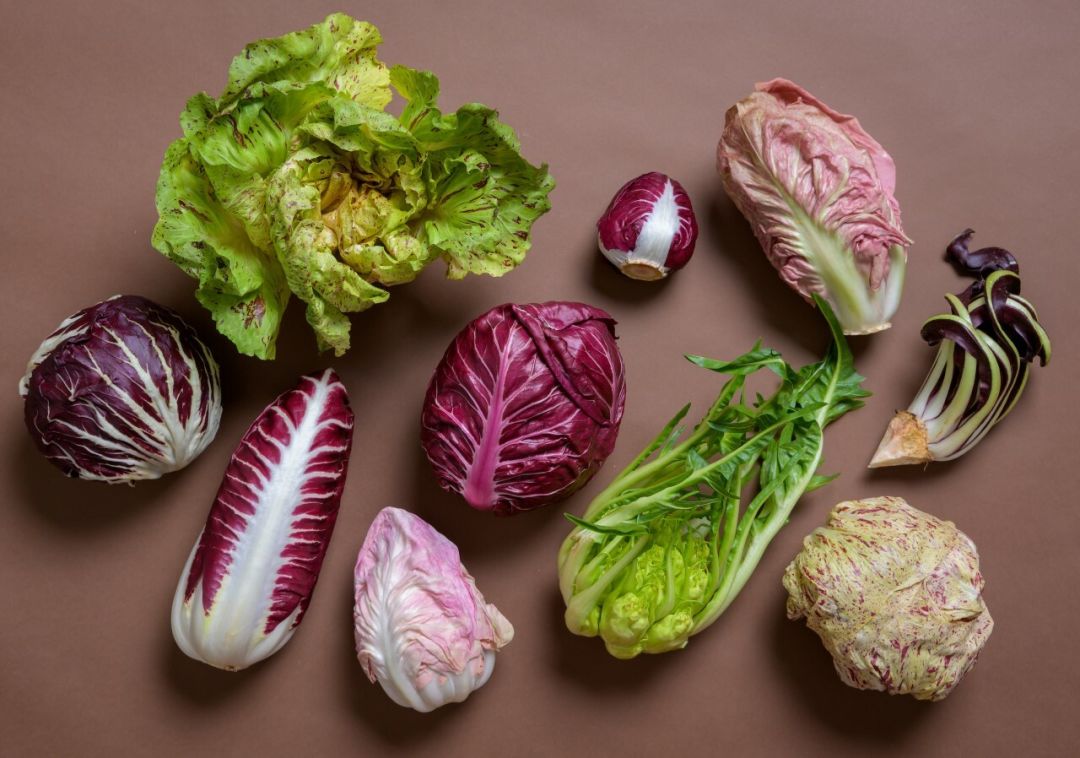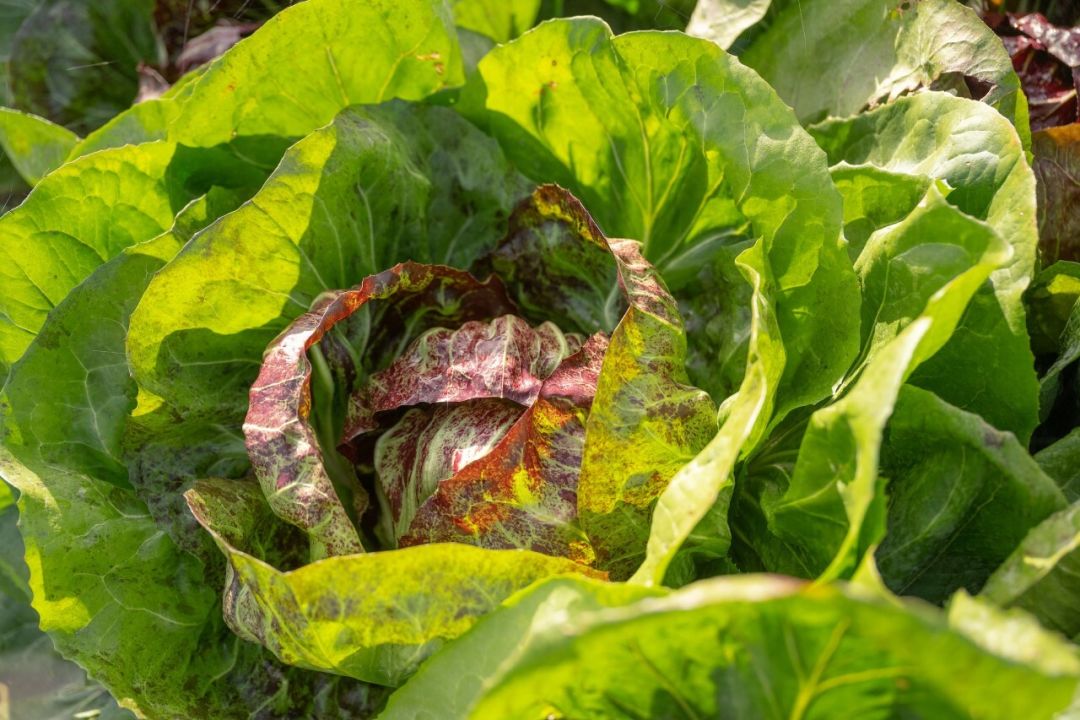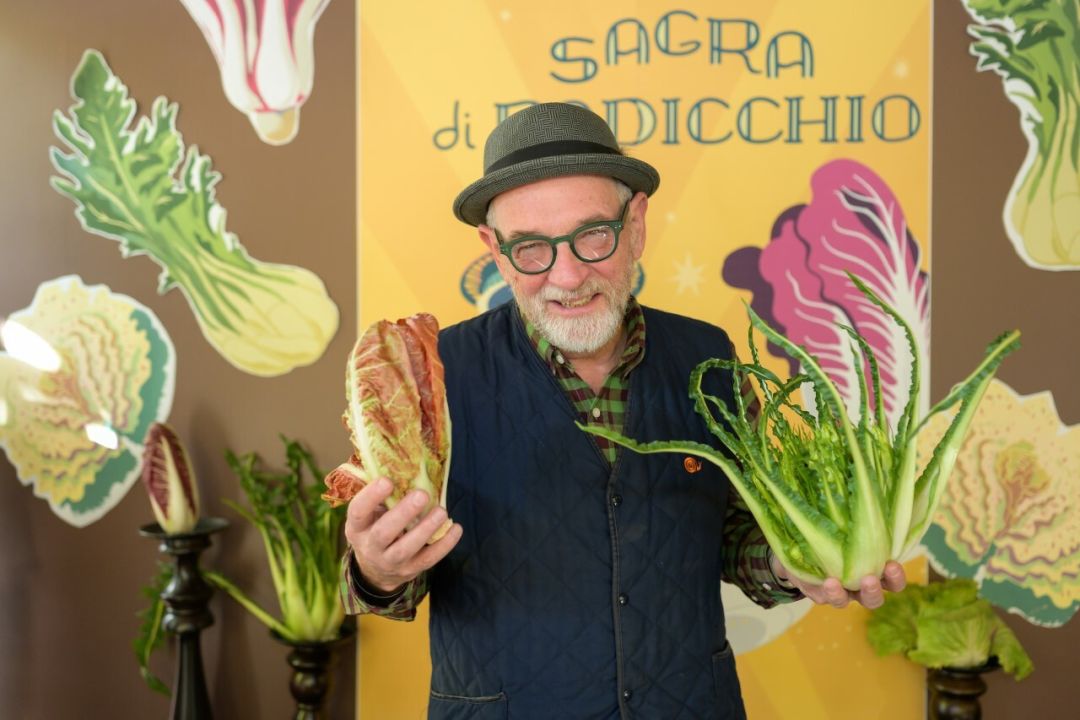Are You Ready to Join This Pacific Northwest Vegetable Cult?

A sampling of radicchio varietals
Image: Shawn Linehan
They study radicchiology. Their tractors, delivery vans, and pick-up trucks sport “bitter is better” bumper stickers. They watch RAD [icchio] TV on YouTube. These are the radicchio people, and they’re as devout as Deadheads and Swifties.
For a growing pact of agriculturally adjacent folks in the Pacific Northwest, radicchio is the unifying fetish object. Every year, they organize across Oregon and Washington for Radicchio Week, a festival anchored by the radicchio symposium and the Sagra del Radicchio—a radicchio tasting fair that pairs local farmers with chefs, aimed to get radicchio into the mouths of the people. Why radicchio? They say it’s the key to extending Oregon’s growing season, and sustaining our local farming community.
Previously, the festival’s biggest events took place in Seattle, but this year, Portland snagged them for the Redd on Salmon Street; the day-long symposium takes place there on October 27, and the sagra (“celebration”) is October 28.
Radicchio is a type of chicory, the same root that’s ground into New Orleans-style coffee, and to us more familiar as the crimson, softball-sized vegetable at New Seasons that looks half way between a head of cabbage and a head of lettuce. However, radicchio di Chioggia (kee-oh-jee-uh, like chianti)—the grocery-store variety—is only the tip of the radicchio iceberg.
Lane Selman, an Oregon State University professor of horticulture and the founder of the Culinary Breeding Network, is radicchio’s self-appointed publicist. “Remember that Portlandia where Steve Buscemi is like, the PR person for celery? I was like, ‘Dude, this isn't even funny. This is my life,’” she says.

Radicchio growing in the field
Image: Shawn Linehan
Selman writes grants to fund research improving all winter crops in the Pacific Northwest, but radicchio, she says, speaks for the bunch. “It's like the poster child. It’s showing that we can—by creating a lot of enthusiasm around this particular crop—get people to eat something local in the wintertime.”
Much of Selman’s work is centered around season extension because, she notes, while we champion eating local here in the Pacific Northwest, it's easy to become fair-weather locavores when the rain hits: “A lot of people eat locally from let's say, May through, like, right now [October], and then they don't go to the farmers market; they stay home; they go back to the grocery store and buy lettuce and cucumbers that are grown in California.”
“I want farmers to be financially successful, so that small farms continue to exist. That means they need to have income in the winter,” she adds.
Enter radicchio. Our bright-leafed savior comes from the Veneto region of Italy, where it’s been a fixture of the local diet for centuries. As Burgundian pinot noir flourishes in Oregon and Washington because of our similar climates, so too does radicchio. The Pacific Northwest sits on the same latitude as the Veneto, providing similar weather, and our days are similar lengths.
But radicchio is a fickle and demanding crop, filled with nuance and wonder—that’s what’s drawn so many to this sub-culture—which also means crop failure is a big worry. All varietals are planted in July or August, but mature at different rates; some are ready in two months, while others take as long as four to reach maturity. Some radicchio types are resilient enough to be “held” in the field as well—left ostensibly to rot, their outer plumage beginning to decompose while the inner core grows sweeter in the winter’s frost.
The major factors of success, Selman says, are seed quality and farming practices. Her solution is to bring Italy here. She's working both to import seeds and to bring Italian farmers out to consult on growing methods and practices in Oregon and Washington.
But learning Italian farming methods is a bit like learning Nonna’s tortellini recipe: things get lost in translation, and sometimes the most critical details are written off as common sense. It might be salting your pasta water, or the pinch of nutmeg in the pasta’s filling, or in the case of growing radicchio, it’s watering patterns and adding copper to the fields.
“They can’t even think about what those things are, because it’s like breathing to them,” says Selman.

Well Spent Market proprietor Jim Dixon is a radicchio person.
Image: Shawn Linehan
This year, she’s brought Andrea Ghedina, owner of the seed company Smarties, all the way from Chioggia, the aforementioned namesake of the grocery store staple. Selman says, however, that Verona is Ghedina’s favorite radicchio varietal.
His Italian seeds are distributed state-side under the label Gusto Italiano, a collaboration with the Bellingham, Washington-based seed breeder Uprising Seeds. At the Sagra del Radicchio this year, attendees can sample the fruits of Ghedina’s seeds in Verona radicchio grown by Brian Shipman and Mary Colombo on their farm, Wild Roots, in Troutdale.
Shipman and Colombo are certified radicchio people; they trace their relationship with the transfixing plant back to 2008, to their first farming internship in Petaluma California.
“It has that mystique and mystery,” says Shipman. “It feels like a very Portland or Northwest thing, where it’s sort of an underdog vegetable. It's bitter and has this crusty exterior, but it really has a lot of substance to it—if you’re able to crack the code.”
Today, the two grow over 25 varieties of radicchio—and that’s trimmed down from previous years. Radicchio covers roughly 20 percent of Wild Roots farm. While others in the area may grow a higher volume, Shipman estimates that Wild Roots may be one of the most radicchio heavy farms around, relative to size.
Shipman says he’s seen an increase in his own farm’s productivity as both their farming skill and access to quality seeds has improved. In past years, as much as half of Wild Root’s radicchio crop failed. (Selman says she’s seen as low as 15 percent yields on some farms.) Today, Wild Roots is usually able to harvest and sell 90-100 percent of what they plant.
For the sagra, Wild Roots is paired with Leila Schneider who bakes bread at Café Olli. What does bread have to do with salad, other than being an excellent accompaniment? Shipman says it’s important consumers understand radicchio to be a vegetable as well as a “green.”
“It's that misconception of like, ‘Well, it looks like a lettuce, walks like a lettuce, feels like a lettuce ... must be lettuce, so I'm gonna salad it, right?’” says Shipman
As farmers continue to learn Italian growing practices, the radicchio squad also want to pass along how Italians eat the stuff: while the right varietal makes a fine salad, it turns out many of radicchio’s culinary applications involve cooking.
To drive that point home, Schnieder plans to roast wedges of Wild Roots’s Verona radicchio in Café Olli’s wood oven before chopping it and mixing it into bread dough. She’ll serve her fougasse (a leaf-shaped bread from Provence, usually peppered with olives and onions, sometimes featured on The Great British Baking Show) dotted with hazelnuts, streaked with balsamic vinegar, and crusted with parmesan.
Schneider’s radicchio ties run deep, too. She’s had one foot in the kitchen and the other on the farm for the last decade. Before moving to Portland this spring, she was working as a pastry chef and growing radicchio outside of Walla Walla, Washington.
“In Eastern Washington, we would get hard frost after hard frost and still be able to—like under layers of slime—harvest a beautiful head of radicchio in January or February,” says Schnieder. “That really stuck with me—the resilience behind that vegetable.”
Beautiful flower shapes in blush pink, and wild fuchsia, and tightly-packed orbs and oblongs, a rich oxblood with contrasting white ribs—the striking colors are not what we expect to pull out of dank Oregon fields in the winter months. “There's nothing else we eat that looks like that color,” says Selman.
But while their beauty is certainly part of the allure, that dance with nature, where obstinance meets enigma, is what keeps the truly radicchio-obsessed up at night.
What the radicchio people want at the end of the day? “To promote radicchio as a really sustainable crop to grow in the Pacific Northwest in the winter, to replace—hopefully, someday—iceberg or romaine lettuce from California on the shelves of supermarkets or on restaurant plates in the winter,” says Schneider.
If Instagrammable flora is the way to our (the consumer’s) hearts, so be it.




